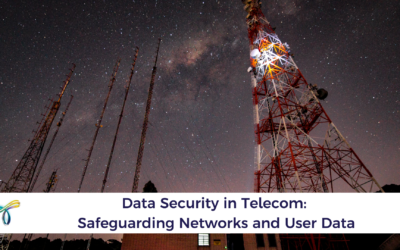Identity and Access Management (IAM) is essential for a successful digital transformation. It is also beneficial for the creation of a digital workplace that is centred around the end user. User experience of employees while executing daily business operations is now streamlined. It starts from registration into organizational business applications through the lifecycle, till employees exit the organisation, thanks to the evolution in authentication solutions.
With advancement in technologies, IAM solutions are also upgrading their functions and credibility in security controls and ease of access. IAM is revolutionizing experiences for customers and workforce, especially with AI and blockchain. Let’s take a look at what are the latest trends in IAM technologies.
Blockchain evolution in IAM

A blockchain enables everyone in the network in identity management to have the same source of clarity about which credentials are valid and who attested to the validity of the data inside the credential, without the actual data being revealed.
One of the three foundations of Self-Sovereign Identity is Blockchain. “Blockchain Technology” refers to the decentralised database technology that allows users to govern the development of data between entities via a peer-to-peer network, employing consensus techniques to assure data replication among nodes.
The fact that each block where data is recorded cannot be modified is what makes blockchain safe. Only once the majority of the network has agreed may someone write to the blockchain.
Single Sign-on systems have a bright future ahead of them, especially when combined with biometrics
For many businesses, single sign-on (SSO) is becoming a key IAM requirement. Employees are logging into an increasing number of systems and applications. Single Sign-on (SSO) streamlines the user experience while removing the need to manage numerous credentials. One of the driving forces behind SSO adoption is the transition to the cloud, which enterprises see as a method to reduce security concerns.
While SSO makes password management easier, it is more about security than user comfort. The solution lacks granular controls and automation architecture to ensure proper user access to IT resources. To achieve granularity, governance and compliance regulations have to be categorized and standardised. Users should be assigned to groups of access, according to the governance mode they are in. Tomorrow’s SSO will be upgraded to biometrics – gesture, eye stamp, fingerprints, face recognition etc. This will ensure a lethal combination of seamless experience and robust security.
IAM Artificial Intelligence
Context-based identity is a feature of Identity Management. It compares facts about a user who has to be validated in order to authenticate an identity. Numerous behavioural patterns, such as physical location, IP address, usage, preferences, and machine address, are included in this data.
Users’ authentication effort is reduced by AI-based solutions based on machine learning. This helps to alleviate the trade-off between user convenience and security. As a result, businesses can take advantage of the best of both worlds. Effective identity management and access restrictions based on granular user-level regulations provide a high level of security without burdening users or IT employees.
Management of Privileged Access
Organizations must know who is accessing what, when, where, why, and how in today’s IT world. A Privileged Access Management (PAM) solution can help with this. These solutions are based on cybersecurity policies and methods for managing and securing accounts with privileged users who have heightened access and permissions.
Traditional PAM systems rely on passwords for security. However, forthcoming identity and access management trends show that these solutions are moving toward a more flexible and easier-to-deploy identity-centric approach.
Identity-centric PAM is designed to handle access seekers apart from human-like machines, services, and APIs. Strongly authenticated individual identities—not shared accounts—where the least privilege can be applied is the key to achieving identity-centric PAM. All controls must be dynamic and risk-aware, which requires modern machine learning and user behaviour analytics. PAM must integrate and function within an exhaustive and expansive ecosystem, including cloud providers, DevSecOps tools, containers, microservices, and more.
The foundation of Identity-Centric PAM is built on:
- Construct Trust: Maintain and automate authoritative security policy. Secure and shake unique identities to every system with the authoritative security management platform.
- Verify Requesters: Manage enterprise directory identities to authenticate and authorize humans, machines, or services, eliminating the provisioning of local accounts.
- Analyze Relevance of Requests: Utilise ITSM solutions to operate privileges. This leverages context to make just-in-time access decisions and leave zero standing privileges.
- Secure Admin Environment: Providing secure access passage through a clean source. This reduces the risk of exposing servers to malware or bug injections during a connection.
- Permit Least Privilege: Enable just-in-time privilege based on temporary access through a simple request process. Limit lateral movement by only granting access to the target resources needed and no more.
- Audit 24/7: Manage and maintain audit logs and video recordings as evidence of compliance. This is a best practice for privileged sessions should forensic analysis or other review be required.
- Build Adaptive Control: Integrate machine learning algorithms to analyze user behaviour, identify anomalous activities, automate alert announcements and execute active responses.
Conclusion
It is impossible to ignore the importance of Identity and Access Management. Many businesses are aware that they are not specialists in the field of Identity Management. Identity is a continual process that must be handled similarly to incident response. Moreover, with the new advancements in IAM solutions, enterprises are eagerly looking for IAM solution providers who can customize and build on top of IAM platforms, according to individual business goals. DigiTaiken’s approach to IAM services and solutions is built on core activities, namely, Access Management, Identity Management, Access Governance, and PAM. We help you elevate your organization’s goals towards digital transformation, develop data strategies in line with revenue maximization and achieve customer satisfaction.





